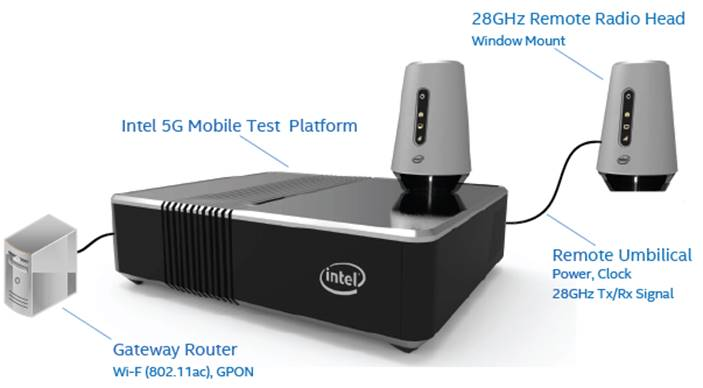Fox Sports To Test 5G Wireless 4K Camera Links At U.S. Open
LOS ANGELES—Fox Sports will put 5G to the test for wireless camera contribution next month during the 118th U.S. Open Championship at the Shinnecock Hills Golf Club when it will use an AT&T ad hoc 5G network to transmit 4K HDR shots from two cameras on the course’s par-3 seventh hole to the Fox Sports production truck covering the tournament.
“We have a fair amount of 4K flying around the U.S. Open,” says Michael Davies, senior vice president, Field & Technical Operations for Fox Sports. “We are doing some native 4K production for DirecTV as we’ve done the last two years. This [the wireless camera use] is more of a proof of concept. But overall, these cameras will be incorporated into that 4K workflow, so if production needs them, they have them.”
[Read: DirecTV To Offer Quad-Screen, 4K U.S. Open]
Deploying 5G for 4K wireless camera contribution is a collaborative effort of Fox Sports, Fox Innovation Labs, Ericsson, Intel and AT&T. Ericsson will provide the 5G radios, baseband, simulated network core and 4K video encoder and decoder; Intel will supply its 5G Mobile Trial Platform, a compact 5G device capable of transmitting 1.6 Gbps that will provide 5G to IP translation; and AT&T will set up a temporary millimeter wave network connection to deliver the 4K shots from the seventh hole.

The seventh hole is in a secluded part of the course, so when Fox Sports did its site survey of Shinnecock, that hole made the most sense for the 4K wireless camera test, says Davies. Wireless 4K contribution will be in addition to, not in place of, Fox Sports’ HD shots from the seventh hole.
“When technology is in its early stages, like this, we layer base cameras on top of what we have,” he says. “The only difference is these cameras will probably stay at the seventh hole. They won’t roam the course.”
The sports network has established “some reasonable goals” for the test, which include limiting the range of the test cameras from their 5G receiver, he adds. “In theory, a future 5G network would allow you to walk wherever you have coverage.”
Get the TV Tech Newsletter
The professional video industry's #1 source for news, trends and product and tech information. Sign up below.
“I was first exposed to the promise of 5G at the Mobile World Congress a couple of years ago,” he says. “I thought about 5G but never really knew how powerful it was going to be. But now it’s clear this technology has the ability to increase our capabilities by exponents, not percentages.”
In Davies’ view, there is nothing in the broadcast business that isn’t potentially touched by 5G technology. From very large shows like the U.S. Open to small shows where there is no need to wire cameras, 5G will make its presence felt, says Davies.
[Read: The Dazzling Future Of 5G Wireless]
That’s especially true now that Fox Sports and others in the industry are on the IP production path with the adoption and deployment of SMPTE ST 2110. “What's nice is the way we are doing production in IP. IP and 5G are going to meet up quite nicely in the future,” he says.
“Obviously, it’s a lot of wait and see [regarding 5G], but I think we will look back at this small test as our very first shot at using this technology to get our heads around what it’s capable of. I think ultimately this technology will be extremely disruptive,” he says.
While testing 5G technology is the primary objective, there are other benefits. “We get to know companies like Ericsson, Intel and AT&T, and they get to see how we work,” Davies explains. “When they are thinking about things at this very early stage, we’ve got a chance to explain to them what we think could be very useful in the future and they can build that in.”
Although the shots from the seventh hole will be the first Fox Sports use of 5G at a golf tournament, AT&T already has provided 22 live 5G links to support 3,8000 terabytes of network capacity in February at the Winter Olympics in PyeongChang, South Korea.
The 118 U.S. Open Championship will air on Fox and FS1 June 14-17.
Phil Kurz is a contributing editor to TV Tech. He has written about TV and video technology for more than 30 years and served as editor of three leading industry magazines. He earned a Bachelor of Journalism and a Master’s Degree in Journalism from the University of Missouri-Columbia School of Journalism.

